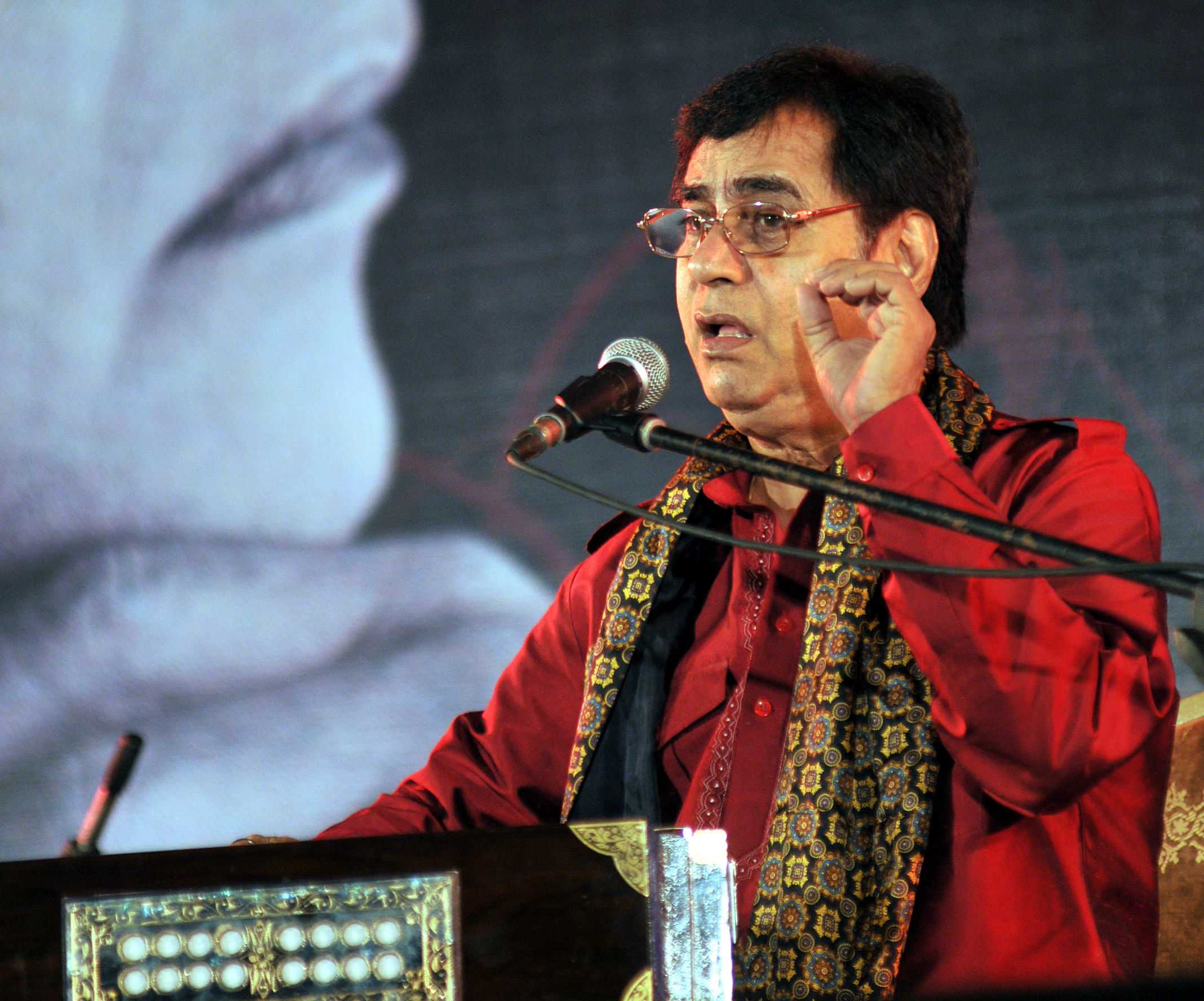
The name Jagjit Singh is synonymous with ghazals. Considered a high-brow and indolent pastime, the ghazal had largely remained confined within high walls till the mid-60s. Toffee-nosed purists of the sub-continent steadfastly adhered to the ghazal as a sub-genre of classical music and frowned on its entry into the public domain through films and mushairas (gatherings of poets).
The ghazal enjoyed an exalted status among the elite, just as the sonnets (14-line poems) did in English poetry. Breaking into the ramparts of the classical ghazal and making it available to the masses was indeed a challenge. Even the great Talat Mahmood and the legendary Mohammad Rafi couldn’t popularise ghazals the way Jagjit Singh eventually did. Both the stalwarts sang film as well as non-film ghazals. Yet, they remained somewhat out of bounds for the largely unversed and uninitiated audiences.
Born into a simple Hindi-Punjabi speaking family in Rajasthan’s Sri Ganganagar, Jagjit Singh observed this and decided the ghazal must be brought out of its confines. In an interview to this writer for an Urdu daily, he admitted he was more at home with Hindi and Punjabi than Urdu. In fact, Urdu came to him as a secondary language and a tongue out of his linguistic consciousness. So he began to experiment with the forms and metres of conventional ghazals long before Pankaj Udhas, Talat Aziz, Satish Babbar or even Anup Jalota emerged on the scene in the eighties.
Without a skerrick of doubt, Jagjit Singh can be called the doyen and the finest exponent of popular and film ghazals. By breaking away from the orthodox rendition of the classical ghazals of Mir, Momin and Ghalib, he began to pick up simple and light ghazals penned by Qateel Shifai, Gulzar, Kaifi Azmi, Nida Fazli, Sudarshan Faakir (Woh kaaghaz ki kashti, woh baarish ka paani.. Film: Aaj, 1987), among others.
Who can ever forget his ‘ Tum itna jo muskura rahe ho, kya gham hai jisko...’ (Film: Arth), ‘ Jhuki-jhuki-si nazar....’(Film: Arth), ‘ Tum ko dekha toh ye khyaal aaya’ (with Chitra Singh for the film Saath-Saath), ‘ Ye tera ghar ye mera ghar,’ ‘ Hothon se chhoo lo tum,’ ‘Koi ye kaise bataye, ‘ ‘Teri khushboo mein base khat....’, ‘O ma, tujhe salaam (Khalnayak), ‘ Seene mein sulagte hain...’ The list is simply interminable.
Jagjit Singh once told me at the Film and Television Institute of India, Pune: ‘Bas alfaaz aasaan aur jazbaat gahre/Ghazal pe na hon bandishon ke pahre.’ (Simple words and profound thoughts/There mustn’t be the bindings of rules on a ghazal).
In fact, Jagjit Singh disliked too much prosody or versification. “This adversely impacts the soul of a ghazal,” he once said. That’s the reason his ghazals in films and albums are still so popular and hummable. Incidentally, this is the 10 year of his departure. He breathed his last in 2011. His 80th birth anniversary falls on February 8.